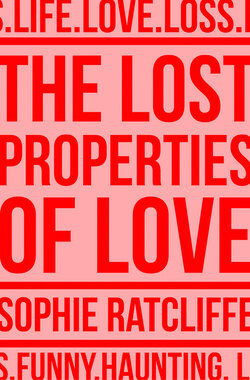Читать книгу The Lost Properties of Love - Sophie Ratcliffe - Страница 11
Ferriby to Brough
Оглавление— 2016 —
people who make art … cannot do it blind.
You cannot do it by looking at a toaster.
Sheila Heti, ‘On the Subject of Artists Talking About Art’
What do happy families look like? I think through the cards in the pack. Mr Bun the Baker, Mrs Chip the Carpenter’s wife, Master Soot, the Sweep’s son. Neat groups of four, matching sets fitting neatly into the palm of your hand.
Fitting together is harder than it looks. It’s worst in the morning, as my family gropes its way towards various syncopated goodbyes. At some point, during toast and juice supervision, I run upstairs to pull on some clothes. Fishing around for a dress with no waist, and a pair of earrings, then hunting through the dirty-clothes basket for a pair of tights and finding some with a (painfully constricting) hole in the toe. I make my way to the front door, tripping over assorted shoes and a collapsing toy pram. My son stands by the front gate and asks if he can play Minecraft. I wonder when I last took the time to comb his hair. To read him a book. How much time is it fair to take? How much belongs to me? The question wheels in my mind, like a foot in mid-air, between platform and rails. I want to fall.
No more sombre enemy of good art than the pram in the hall. So said Cyril Connolly. This is a fundamental misunderstanding of childcare equipment. With a pram there’s movement. A pram-pusher can think, walk and carry baggage. And there’s a chance that the pram’s occupant might go to sleep. Prams don’t even have to be taken out for an airing. They can be rocked up and down a hallway with a laptop in the hood and a paragraph has a possibility of being born. Other things get in the way of art. Laundry. The school run. Plates of food that always seem to need clearing away. The clutter on the living-room floor. The tidying up, and the nits, and the compromise. These are the things that get in the way. Along with the bills and the boiler maintenance. The train set’s wooden circle, its level crossings, its half-built bridge. The half-eaten fish finger on the plastic plate (not mine).
It is quiet right now, apart from the sound of engine against track, that familiar juddering, grinding and groaning of metal. Out of the window to my right, the fields, cut across with drainage canals, lakes and spinneys and car parks and Portakabins. I look at the bag of books and papers beside me. This, if I’m lucky, is the beginning of the middle of my life. It is a time when promising thirty-something starts to give way to middling fortysomething – a strange in-between period where horizons and trousers shrink. My nights are spent chasing not men but lost PE kit. Middles can be hard to navigate: we never know exactly where they begin. How should we pace ourselves? Is there a schedule? I scroll through the mental calendar. Ghosts are planted on various pages, next to bank holidays and festivals. My dead teacher. My dead friend. Back to my father. Dead at forty-five, he hovers over each September, a corduroy shade, condemned to perpetual middle age. I imagine the ghost you will soon be.
I am alone in my carriage, with the fifty-six other passengers. Alone together, moving to the same rhythm. I pull my phone out. There are squares and squares of photographs that contract at the touch of the screen, disappearing into tessellated blocks, a mosaic of motherhood. One of a parent’s first instincts, one of the first things they do once a child enters their life, is to begin to capture it. To render it still and permanent. As children grow, the photograph album, or the ever-present camera phone, is like a talisman. We photograph our children a thousand times. To pin them down, as if the recording might render them ours for ever, ever more perfect, but never more perfect. Photographs: the only place where things can last, as the gaze from the screen stares out of time. An illusion. It’s where we outsource our lament against time’s passing. Where we park our fear of death. White borders contain it all. Nothing must be lost.
The man on the other side of the aisle is writing an email, and the woman in front of me is staring at a spreadsheet. My phone is about to go flat, but I can still look at pictures of my children, for now. And later, I will still picture them, like negatives, the pair of them shuttering across the back of my mind with a wave of impossible love. There they are – still – hanging upside down off the rails near the park, laughing with open mouths. Squinting into the sun beside a beach hut. Holding ice creams in hands that are small.
